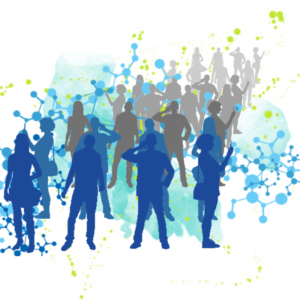There has been some talk about a new dot.com bubble emerging. Hopefully, the irrational exuberance that created the last dot.com bubble and caused it to burst will be avoided if tech stocks do start gaining momentum. I’m certainly optimistic that tech companies have a bright future and the Web is still a place to look for new ideas. There are a number of start-up companies that are advancing Web 2.0 in interesting ways [“Start-ups Try to Plot A Complete Picture,” by Kim Hart, Washington Post, 27 November 2006]. It remains to be seen if a market forms around their products. As I’ve noted in previous posts about Web 2.0, it has advanced the World Wide Web by connecting or “mashing up” content on site with content from another site. The new start-ups are taking data bases and mashing them with maps.
[Sean] Gorman’s company, FortiusOne, collects hundreds of data sets and combines them with maps available online to create what are known as mash-ups — a new breed of application formed by mixing data from different online sources. In the year since Google, Microsoft and others made their mapping programs available for free, thousands of Web developers have used them as digital canvases to display information. Some of these online geographers are ready to take the next step and try to commercialize their work. “There’s a huge appetite to manipulate data in ways that are relevant to making everyday decisions,” Gorman said. “This puts geographical analysis in the hands of people who have never had a way to use it before.”
Since the Esquire article about me appeared and the Institute for Advanced Technologies in Global Resilience (IATGR) was introduced to the world, there have been a number of posts made about whether the kinds of solutions we hope to work on will actually work. John Robb, for example, believes that things like ResilienceNet are Byzantine because they seek a centralized solution to a myriad of problems. Robb writes:
I contend that within exceedingly complex environments, the only true way to approach resilience is through decentralized processes. If you don’t approach the problem from this perspective (a philosophy of system design), the complexity overwhelms you and you fall into a cycle of rapidly diminishing returns.
Robb is correct that our approach is to connect valuable information from varied sources and automatically analyze it using Oak Ridge super computers, providing the results of that analysis to those who with a need to know. He fails to recognize, however, that the system is taking advantage of decentralized processes to generate value added rather than trying to create a super system that stands on its own. Others are concerned that those super computers offer a single point of failure for such a system. Ultimately, I see the system using the power of grid computing to overcome this vulnerability. In much the same way, Web 2.0 is using mash-ups, our approach to security will present information in a much more meaningful and timely manner to those who must respond to prevent, mitigate, or recover from adverse events. In other words, what looks like a centralized system is much more likely to be decentralized and distributed in ways that even Robb would agree were resilient. The entire conversation is worth following on Robb’s blog. Another blog worth reading on the subject is Shawn Beilfuss’ post on The Age of Resilience. To a lesser extent, focusing on security is how FortiusOne got started:
FortiusOne at first specialized in using maps to help government agencies improve security and prepare for emergencies. When Gorman saw how easy it was to visually represent data through maps, his team last month launched GeoIQ, a Web site that lets people manipulate Census data and local listings to create “heat” maps, color-coded displays similar to weather maps, of the entire nation or a single street.
Of course, there are also commercial applications for this kind of mash-up:
Another local start-up, Spadac, is selling its mash-ups to retail companies that need to find new store sites or conduct targeted advertising campaigns. The McLean company created an algorithm that overlays demographic and real estate information on top of images from Google Maps to pinpoint potential business growth areas.
Hart notes that Google and Microsoft content is only free in mash-ups if the resulting content is also free. They charge a fee if the mash-ups are part of a commercial enterprise. Hart also notes that there are privacy concerns about mash-ups as well as limitations.
The images are usually too outdated and inaccurate to use for projects that require precision, such as locating buried gas lines or predicting the path of a forest fire, said Robert M. Samborski, executive director of the Geospatial Information and Technology Association. Google and Microsoft refresh their images only every 18 to 24 months. Even so, “Google’s done more to raise the awareness of using maps than the industry’s been able to do in the past 25 years,” Samborski said.
The use of mash-ups is only limited by one’s imagination. Hart provides several examples of how mash-ups are already being used.
Platial, a Portland, Ore., start-up, received venture-capital investment to launch a socially networked mapping site, where people can plot and share maps of their favorite places around the world. Zillow.com stitches together Google’s satellite maps to show property values across the country and has received $32 million in financing. A Dublin-based mash-up tracks the real-time paths of commuter trains. One in Chicago catalogues crime statistics, and another in Los Angeles records the location of celebrity sightings. As companies continue to experiment, the mapping technologies may change how people search online, drive around town and buy homes. “This is a local advertiser’s dream,” said Donna L. Hoffman, co-director of eLab 2.0, a research center at the University of California at Riverside that studies online consumer behavior. Mash-ups will really take off, she said, when companies find a way to deliver the data instantly to mobile devices. “People will pay to have that kind of control over the content,” she said. That’s what Herndon-based Reality Mobile is trying to do. The company overlays live video feeds on top of satellite images — often using Google Maps — and transmits the information to dozens of cellphones at once. The FBI used Reality Mobile’s technology to strengthen security at the Super Bowl in Detroit, and the Los Angeles Police Department is experimenting with it. The technology tracks objects, such as a suspect or vehicle, as they move across the map, so officers can secure buildings or keep an eye on specific street corners from anywhere on the ground.
When the World Wide Web first hit the Internet, people declared that it made geography less relevant, since you could connect virtually and instantly to sites around the globe. The Web was thought to have fundamentally changed the way people looked at geography. It is a bit ironic that mash-ups are proving that geography still matters and, in fact, using it is making the World Wide Web more relevant.




